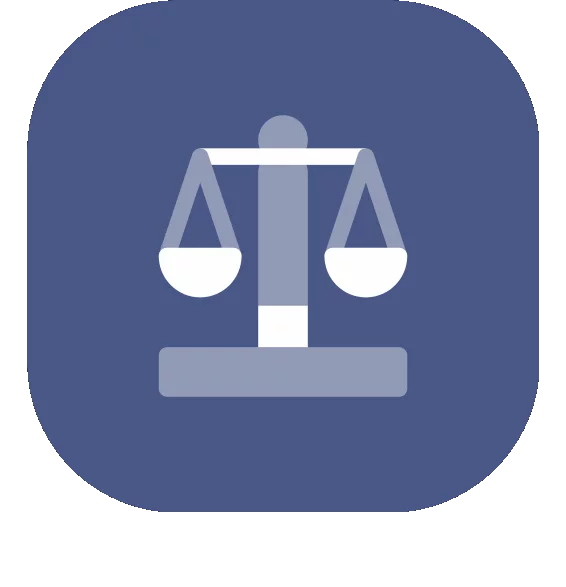SEO for Photographers: The Complete Guide to Boost Your Visibility
Having a website full of beautiful photographs to showcase your work is important, but how do you make sure the right people see it? SEO for photographers […]
Having a website full of beautiful photographs to showcase your work is important, but how do you make sure the right people see it? SEO for photographers is the key! It will help increase your visibility online and reach potential clients searching for services like yours.
Whether you shoot weddings, family portraits, or commercial work, SEO helps ensure that your website shows up in relevant searches.
This guide breaks down practical SEO strategies that are easy to apply, even if you’re new to the process.
From keyword research to Google Business Profile optimization and social media strategies, we’ll show you how to build an SEO plan tailored to your photography business. Let’s start!
Key Takeaways
- Keyword research is essential. Instead of broad terms, focus on specific keywords that match your niche, like “outdoor wedding photographer. “
- Create SEO-friendly content – Start a blog, experiment with various content formats, and align posts with seasonal trends to keep visitors engaged.
- Optimize your Google Business Profile – Update your services, contact information, and photos to rank higher in local searches.
- Image optimization matters – Use proper file names, alt text, and lazy loading to improve SEO and user experience.
- Backlinks build credibility – Collaborate with photography communities, influencers, and directories to earn valuable backlinks that boost your visibility.
- Technical SEO ensures smooth performance – Mobile responsiveness, site speed, and secure HTTPS protocols are essential for keeping visitors engaged and improving your rankings.
- Integrate social media with SEO – Use Instagram, Pinterest, and other platforms to promote your content and drive traffic back to your website.
SEO for Photographers: What Is It?
SEO for photographers is about making sure your website shows up when potential clients search for your services online. It helps you connect with the right audience by improving your site’s visibility in search engines like Google.
This involves a combination of strategies—like keyword research, image optimization, content creation, and structured data—that ensure search engines can properly understand and rank your content.
Think of SEO as a way to bring your portfolio in front of people who are already looking for services like yours. Without it, even the most beautiful photography website can get buried beneath countless other search results.
Why Is SEO for Photographers Important?
A strong SEO strategy makes all the difference in today’s competitive market since it helps improve their visibility in search engine results, making it easier for potential clients to discover their work online.
Given the competitive nature of the photography industry, standing out in local and niche searches—like “wedding photographer near me” or “family portraits in [city]”—can be crucial to attracting clients.
6 Best Basic SEO Tips for Photographers to Optimize Your Website
Optimizing your photography website with the right SEO techniques helps you connect with the right audience and improves your visibility online.
In this section, we’ll discuss practical tips that form the foundation of a solid SEO strategy, giving your portfolio the best chance to shine in search results.
Let’s get started!
1. Conduct Keyword Research for Photography
Effective SEO for photographers starts with smart keyword research—it’s like building a roadmap to help clients find you online. It’s essential to find keywords that reflect what you offer and match the phrases potential clients use when looking for your work on Google search.
For example, if you specialize in wedding photography, phrases like “intimate wedding photographer” or “outdoor elopement photography” are more effective than broad, highly competitive words like “wedding” or “photography.”
Find the Right Balance Between Search Volume and Ranking Difficulty
When working with keywords, it is key to strike a balance between high search volume (more people searching) and low competition (easier to rank). If a keyword is too broad, it might attract a lot of visitors but not the ones specifically looking for your services.
For example, “family photography” is broad and competitive, making it harder to rank organically. Instead, focusing on more specific terms, like “holiday family portraits,” increases your chance of landing in the top organic search results.
Use Long-Tail and Short-Tail Keywords
Pro Tip: Organize your research in a spreadsheet with a mix of long-tail (e.g., “engagement photos in natural light”) and short-tail keywords (e.g., “engagement photographer”).
Long-tail keywords are more specific and have lower search volume but tend to attract clients with clear intent. On the other hand, short-tail keywords have higher search volume but are harder to rank for.
This strategy will help you create more targeted content and improve your site’s overall SEO performance.
Brainstorm Topical Keywords to Enrich Your Content
As you explore keyword options, think beyond primary keywords. Consider topical terms—related phrases that naturally show up alongside your main keywords.
For example, if your main keyword is “wedding photographer,” you might also use terms like “bridal shoot ideas” or “destination weddings.”
These topical terms make your content more relevant and increase its chance of appearing in featured snippets or search recommendations.
Pro tip: Tools like SearchAtlas can streamline the process. It provides detailed insights into search volume, ranking difficulty, and related topical terms, making it easier to prioritize your SEO efforts.
With these insights, you’ll know exactly which terms to focus on to attract organic traffic and grow your photography business. Bonus tip: You can try it for free with the 7-day free trial.
2. Create SEO-Friendly Content Strategies
The second item from our SEO tips for photographers list is developing a well-thought-out content strategy, which helps photographers grow their brand visibility and connect with their audience.
Think of your website content as a conversation between you and potential clients—if your strategy aligns with what they’re searching for, your photography brand stands a better chance of showing up on the first search engine results page (SERP).
But how can you make sure your content hits the mark? Below are some practical tips to help you optimize your content, improve user experience, and build a strong foundation for your brand’s visibility online.
Start with a Photography Blog Designed for SEO
Starting a blog isn’t just about sharing pretty pictures—it’s about creating a space where your brand can connect with people searching for your services.
For example, if you specialize in landscape photography, a blog post about “5 Best Locations for Landscape Photography in Autumn” will resonate with both search engines and your audience.
Here’s how you can optimize your blog for SEO success:
- Embed SEO phrases naturally throughout your content to align with what users are searching for.
- Optimize every image by using meaningful file names, adding alt text, and compressing the file size for fast loading. This improves both SEO and accessibility. We’ll talk more about that later!
- Use tools such as Google Analytics to track performance, identifying which blog topics bring the most traffic and engagement.
Experiment with Different Content Formats to Keep Visitors Engaged
A blog is excellent for SEO, but exploring other formats can enhance engagement and diversify your content.
Including videos, photo essays, or infographics allows visitors to interact with your brand in different ways, improving their experience and keeping them on your site longer. This helps reduce bounce rates and sends positive signals to search engines.
For example, you could create a video explaining your process during a shoot or an infographic outlining tips for family photo sessions. You might also share an interactive photo gallery showcasing the evolution of your work over time.
These formats are great for enriching your website and making it a go-to resource for photography lovers.
Use a Content Calendar to Stay Consistent
Consistency is a key component of any successful SEO strategy. A content calendar ensures you post regularly, keeping your audience engaged and helping your website stay relevant in search engines.
Pro Tip: Plan your content around seasonal topics and trends. For example, in autumn, share tips for capturing landscape photos, or in December, post about holiday family portraits. Scheduling content this way keeps your photography relevant to what your audience is already searching for.
Pro Tip 2: You can use tools like Google Trends to see what people searched for during major holidays last year and develop photography-related content based on those trends.
Measure and Adjust Your Strategy Based on Performance
Successful SEO isn’t a one-and-done task—it’s an ongoing process. Truth be told, you’ll always be doing SEO-related work to ensure everything functions properly. It never stops.
Regularly analyzing your content’s performance ensures that your services are effective and evolving with your audience’s needs. Use metrics like traffic, users, bounce rate, session duration, and conversion rates to refine your approach.
Here’s a quick overview of metrics and strategies:
| Performance Metric | Goal | Strategy Adjustment |
| Traffic | Increase | Optimize content and improve visibility through SEO |
| Users | Increase | Expand reach with targeted content and campaigns |
| Bounce Rate | Decrease | Make your content more relevant and engaging |
| Session Duration | Increase | Add interactive elements and meaningful content |
| Conversion Rates | Improve | Refine calls-to-action to align with user intent |
Avoid Keyword Stuffing
While keywords are essential, overusing them (a practice known as keyword stuffing) can hurt your rankings. Instead, focus on creating high-quality content marketing that feels natural and informative.
Search engines reward pages that prioritize user experience over keyword density, so always aim for a balanced approach.
Follow Google’s E-E-A-T Guidelines
It’s impossible to discuss high-quality content without mentioning Google’s E-E-A-T principles—Experience, Expertise, Authoritativeness, and Trustworthiness. These principles are essential for building credibility and achieving SEO success.
For photographers, this involves demonstrating your skills, sharing real-world experience, and building trust with both clients and search engines.
Examples in photography:
- Experience: Share stories or case studies from past shoots, such as behind-the-scenes content or lessons learned during challenging projects.
- Expertise: Publish detailed blog posts explaining advanced photography techniques.
- Authoritativeness: Earn backlinks from reputable photography websites or collaborate with industry blogs.
- Trustworthiness: Display client testimonials, use secure payment methods, and provide accurate information about services.
Applying these principles can help improve your website’s credibility, enhance the user experience, and boost your visibility in search results.
Pro Tip: Google provides an insightful guide on creating helpful content with practical tips on building effective content. It explains how to meet user expectations while following SEO best practices, helping you fine-tune your content to improve performance and maintain relevance over time.
Pro Tip 2: A strategic content plan is the backbone of any successful SEO effort, helping photographers connect with their audience through engaging and optimized content. At LinkGraph, our team offers SEO content strategy services designed to align your content with search intent and industry trends.
From blog development to local landing pages, keyword research, and content optimization, we ensure every piece of content supports your SEO goals and drives organic traffic.
Learn more about how our content strategies can grow your brand!
3. Structure Your Website With Semantic HTML
Creating a visually appealing photography website is important, but search engines also need to understand the structure behind the visuals.
This is where semantic HTML comes into play. It organizes your content with meaningful tags, helping search engines grasp the hierarchy and relevance of your pages. Think of these tags as signposts guiding both users and search engines through your site.
Using tags like <header>, <nav>, and <article> gives search engines the context they need to interpret your content properly. For example, <header> can introduce your portfolio or contact links, while <nav> helps users find their way to different sections, like your gallery or blog. This structure improves usability and ensures your site gets indexed accurately.
If you’re sharing a photo gallery, using <figure> to wrap images and <figcaption> to add captions creates a seamless link between visual and textual content.
It’s also an ideal place to include alt text—essential for both accessibility and SEO. This way, not only can users enjoy your work, but search engines will also understand the content of your images.
Here’s a quick overview of HTML tags and their impact on SEO:
| HTML Tag | Purpose | Impact on SEO |
| <header> | Introduces sections or contains navigation links | Helps search engines understand page structure |
| <nav> | Holds navigation links to other pages | Improves navigation and usability |
| <article> | Wraps a self-contained piece of content | Highlights important information for search engines |
| <figure> & <figcaption> | Links images with captions | Adds context to visual content and aids SEO |
4. Optimize Your Meta Descriptions and Tags
Meta descriptions and title tags are often the first impressions your photography website makes on potential clients. These elements appear in search results, giving users a quick preview of your content and inviting them to click.
Think of the title tag as the headline and the meta description as the short pitch that persuades someone to explore your portfolio.
They need to be relevant, engaging, and aligned with your site’s content. If the preview doesn’t match what users find when they click through, they’re more likely to leave your site.
Here are some practical tips:
- Craft title tags that are concise, descriptive, and feature your main keyword. Aim for 50-60 characters, as longer titles might get cut off in search results. Example: “Wedding and Family Photography in [Your City].”
- Write meta descriptions that inspire action and stay within 150-160 characters. Phrases like “Explore our gallery and book your session today” can spark curiosity and encourage clicks.
- Align both tags with the page content so visitors find exactly what they expect. For example, if the title promotes landscape photography, the linked page should feature landscape images.
Every character counts, especially for mobile users where space is limited.
5. Optimize Images to Boost SEO
Follow these best practices to ensure your images enhance SEO performance and contribute to a better user experience:
- Choose the right file format:
- Use JPEG for photos to maintain quality with smaller file sizes.
- Use PNG for graphics or images that need transparency.
- Use descriptive file names and alt text:
- Rename files with keyword-rich names that describe the content (e.g., “wedding-photography-bride-groom.jpeg” instead of “IMG001.jpeg”).
- Add alt text to each image to improve information retrieval and accessibility.
- Optimize loading speed with lazy loading:
- Implement lazy loading so images only load when needed. This will speed up initial page load times and enhance user experience.
- Add structured data to images:
- Use structured data to give search engines more information about the images, improving visibility in search results.
- This is particularly useful for SEO for wedding photographers, where clients often search for specific themes or styles.
- Balance image quality and page load time:
- Compress large images without compromising quality to improve loading times, boosting organic SEO and reducing bounce rates.
6. Implement Schema Markup for Better Visibility
Using Schema markup helps photographers improve their visibility in search results by providing search engines with detailed information about their content. Here are key practices to follow:
- Highlight visual content with structured data:
- Use structured data to communicate the context and meaning behind your photos, making it easier for search engines to understand and display relevant information.
- This can help differentiate your photography website from competitors by adding layers of useful information.
- Enable rich snippets:
- Schema markup allows search engines to display rich snippets such as star ratings, event dates, and video previews.
- Rich snippets make your content more appealing in search results, increasing click-through rates.
- Apply Schema to galleries and portfolios:
- Enhance your portfolio with structured data, signaling not just the presence of images but also their significance and purpose.
- For example, mark up images with data to show wedding galleries or event photos, making them stand out to potential clients.
- Boost visibility for specific searches:
- Schema markup helps your website appear in relevant searches, improving the user’s path to discover your content. This visibility encourages more engaged users to explore your galleries and services.
Enjoying this article? Stay ahead of the SEO game with more tips and insights from LinkGraph! Follow us on Facebook, Instagram, LinkedIn, Twitter, and YouTube to be the first to discover new strategies and tools that can grow your photography business.
Backlink Profile for Photographers
SEO has a lot to consider, and the list we’ve just shared covers the essentials. But one key element deserves special attention: backlinks.
Backlinks are links from other websites that point to your photography website, and they play a major role in improving your SEO performance. Think of them as digital endorsements—each backlink signals to search engines that your content is valuable, helping to boost your credibility.
So, why are backlinks so important? How do they give photographers a competitive advantage? And where do you even start with building a solid backlink strategy? Let’s take a look at all that.
What Are Backlinks, and Why Do They Matter?
Backlinks serve as trust signals for search engines. When reputable websites link to your content, it tells search engines that your website is reliable and worth ranking higher.
The more high-quality backlinks you earn, the better your chances of increasing your exposure and climbing the SERP (Search Engine Results Page) ladder. This means more potential clients find your portfolio and engage with your work.
Think of it this way: Would you trust a business that no one recommends? Probably not. Search engines feel the same—backlinks are like recommendations, helping to establish your credibility online.
The 5 Best Ways for Photographers to Build a Backlink Strategy
Ready to start building backlinks? Here are some tried-and-true methods to add to your SEO for photographers strategy:
1. Identifying Opportunities for Guest Blogging
Guest blogging is a great way for photographers to share their expertise and gain backlinks from respected websites. Look for photography blogs or online magazines that align with your style and offer value to your audience.
This strategy not only increases exposure but also builds credibility, helping your website rank higher in search results.
2. Joining Photography Communities and Forums
Participating in photography communities and forums can lead to organic backlink opportunities.
By sharing your experiences and engaging with other photographers, you’ll naturally create connections that may result in links to your website.
Active participation also builds trust, improves your SEO performance, and positions you as a valuable voice within the photography community.
3. Collaborating with Influencers in the Photography Niche
Working with influencers in the photography space is an effective way to enhance your SEO strategy. Influencers can feature your work on their platforms, providing high-quality backlinks that boost both your exposure and online authority.
These collaborations benefit both parties as they expand your reach and introduce your photography brand to a wider audience.
4. Utilizing Photo Sharing Sites for Link Acquisition
Uploading your work to photo-sharing platforms like Flickr or 500px can drive traffic to your website and earn valuable backlinks. These platforms often allow links back to your portfolio or gallery, increasing visibility and customer engagement.
Consistently sharing high-quality images on these sites also strengthens your digital footprint and supports your SEO strategy.
5. Pitching to Photography Directories and Magazines
Submitting your portfolio to directories and magazines elevates your status and helps you earn powerful backlinks from authoritative sources.
These links improve your SEO performance, giving you a competitive edge. Targeting curated lists and well-known publications ensures that the backlinks you earn come from trusted websites, further boosting your credibility and exposure.
Pro Tip: Building a solid backlink profile takes time, but it’s essential for boosting SEO performance and establishing credibility. At LinkGraph, our team offers a range of link building services to help photographers grow their online presence, including Guest Posting Services, Digital PR, Press Release Distribution, and Referral Traffic Link Building.
We specialize in acquiring high-quality, niche-relevant backlinks that improve visibility, drive traffic, and strengthen your photography brand’s reputation.
Ready to elevate your strategy? Explore how our custom link-building services can support your growth!
Local SEO for Photography: Make Your Business Easy to Find
The basics and backlinks are covered, but there’s another item we need to cross off your list: Local SEO, a game-changer for photographers.
Think about it: If someone is searching for a wedding photographer, they’re probably looking for someone nearby—not from another state. So, making sure your photography website shows up in local searches is essential for connecting with the right clients.
Have you ever wondered how to rank higher when someone searches for “family photographer near me”? How do you show up on Google Maps when potential clients are looking for wedding photographers?
That’s where Local SEO for photography comes in, helping you appear exactly when and where it matters most.
What’s Local SEO?
Local SEO refers to the strategies that help businesses rank higher in local search results. For photographers, it means optimizing your website and online presence to attract clients in specific geographic areas.
This involves everything from listing your business on Google to encouraging reviews, creating localized content, and engaging with the community.
Why Invest in Local SEO as a Photographer?
If most of your clients are local, Local SEO ensures your business stands out in your area. Imagine someone searching for a “wedding photographer in [Your City]”—you want your name to be at the top of the list.
Beyond ranking higher, local SEO builds credibility by showcasing positive reviews, engaging content, and connections with local events.
By focusing on local SEO, photographers can build stronger relationships with their community, attract the right clients, and gain a clear competitive advantage.
4 Tips to Start Local SEO for Photographers
Local SEO is essential for boosting your visibility online, but how do you get started? Let’s explore some key tips to help you connect with local clients the right way.
1. Claim and Optimize Your Google Business Profile
Start by claiming your Google Business Profile (GBP)—it’s the first step in making sure clients can easily find you.
Add your services, contact information, and compelling images to stand out. Use keywords related to your photography niche, like “wedding photographer” or “family portraits.” This boosts your visibility in local searches and ensures you appear on Google Maps.
2. Encourage Client Reviews and Testimonials
Reviews matter more than you think. Encourage happy clients to leave reviews on your Google Business Profile.
Positive reviews improve your credibility and SEO performance, while thoughtful responses to feedback build trust and customer engagement. Consider making it easy for clients by sharing a direct link to your profile.
3. Create Local Landing Pages for Each Service Area
If you serve multiple locations, create dedicated landing pages for each one. These pages should include geographic keywords, relevant events, or landmarks to resonate with the local audience.
For example, mention popular wedding venues or parks where you’ve done shoots. Optimizing these pages with relevant titles, meta descriptions, and headers increases your chances of being discovered by local clients.
4. Engage with Local Events and Charities
Get involved in your community by participating in local events or supporting charities. Covering these activities on your website or social media boosts your exposure and earns backlinks from local organizations.
This involvement improves your SEO and strengthens your relationship with the community, giving you a meaningful competitive advantage.
Pro Tip: Local SEO is essential for photographers looking to connect with clients in their area, and LinkGraph’s local SEO services are designed to help you stand out in local searches.
Our team provides tailored solutions, including Google Business Profile optimization, local keyword targeting, local listing management, and online review strategies. We focus on building relevance in your community by aligning SEO efforts with local events, directories, and platforms that matter most to your audience.
Explore how our local SEO services can support your growth!
Technical SEO Essentials for Photography Sites
Nope, SEO tips for photographers aren’t ending yet! There’s still technical SEO, a part that is often overlooked but definitely shouldn’t be.
It’s easy to get caught up in the aesthetics and content of a photography website, but behind the scenes, technical SEO plays a crucial role that we must not overlook.
A smooth, secure, and fast site isn’t just nice to have—it’s essential for user experience and higher search engine rankings. If your site doesn’t load quickly or work well on mobile devices, visitors might leave before they even see your portfolio.
Let’s walk through some key technical SEO tips to make sure your site performs at its best and helps you rank higher in search results.
1. Ensure Your Website is Mobile-Responsive
More people are searching on their phones than ever before. In fact, as of September 2024, 63.38% of all website traffic comes from mobile devices.
So, if your site doesn’t adjust smoothly to smaller screens, potential clients might leave before they even explore your portfolio. A mobile-responsive design ensures that your website looks great and is easy to use on any device, whether it’s a smartphone, tablet, or desktop.
Google prioritizes mobile-friendly sites in search results, so this isn’t just about user experience—it’s a critical factor in SEO performance.
Make sure your galleries load properly, your navigation is clear, and any contact forms are easy to fill out on mobile. A smooth mobile experience will keep visitors engaged and help you rank higher in search results.
2. Speed Up Your Photography Site for Better User Experience
A slow-loading site can cause visitors to leave before they see your work. To improve loading speed, compress large image files, use browser caching, and reduce HTTP requests.
Faster pages keep users engaged and positively impact your SEO. Google also uses page speed as a ranking factor, so every second counts.
Reducing image file sizes, leveraging browser caching, and minimizing HTTP requests are all critical factors in accelerating website performance.
These adjustments not only satisfy a visitor’s need for speed but are also significant metrics used by search engines to rank websites.
3. Check and Fix Crawl Errors and Broken Links
Nothing frustrates users more than clicking a link that leads nowhere. Broken links and crawl errors also hurt your SEO, making your site appear untrustworthy to search engines.
Use tools like Google Search Console to identify and fix these issues. Regular maintenance keeps your site easy to navigate for both users and search engines, preserving your rankings.
4. Set Up HTTPS with an SSL Certificate
Security is non-negotiable. Transitioning your site to HTTPS with an SSL certificate protects sensitive information and builds trust with both users and search engines.
Google favors secure sites, which can improve your rankings. Plus, when visitors see that reassuring padlock symbol in the browser, they’ll feel more comfortable engaging with your business.
With these technical SEO practices in place, your photography site will not only look amazing but also function seamlessly, keeping both visitors and search engines happy. Let’s make sure your portfolio gets the visibility it deserves!
Pro Tip: A well-executed technical SEO strategy ensures your photography website performs seamlessly and ranks higher on search engines. At LinkGraph, our team offers comprehensive technical SEO services that cover essential areas like site speed optimization, mobile responsiveness, crawl error fixes, SSL implementation, and structured data integration.
We ensure that your site is fast, secure, and easy to navigate for both users and search engines. Explore how our technical SEO solutions can support your business.
Social Media Integration With SEO for Photographers
Last but not least, social media and SEO for photographers go hand in hand. When we think about SEO, Google and search engines always come to mind. But remember, search engines are available for everything, including social media.
More than ever, people are using social media as a tool to search for brands, products, and services. In fact, a quarter (24%) of people primarily use social media to search online (Forbes). So, it’s essential to ensure that your content is optimized to be found, no matter where. This is known as ‘search anywhere optimization.’
Platforms like Instagram and Pinterest are perfect spaces to showcase your work, but they also provide opportunities to boost your website’s visibility in search results.
By strategically combining visual content with SEO techniques, photographers can amplify both engagement and search performance.
And here’s the best part—in 2024, global social media users surpassed the 5 billion mark, continuing to grow by over 5% annually. This makes it one of the most powerful tools for driving traffic and building a strong online presence.
Let’s take a look at the 4 best tips to do that.
1. Align Your Social Media Strategy With SEO Goals
To maximize your online presence, align your social media strategy with your SEO goals. Promote your blog posts, galleries, or events across social platforms and engage actively with your audience.
This helps build customer engagement, drive more traffic to your site, and send positive social signals that support SEO performance.
2. Use Social Platforms to Amplify Your Content
Platforms like Instagram and Pinterest are perfect for photography because they emphasize visual content.
Sharing high-quality images and relevant posts not only boosts visibility but also encourages users to visit your website. These interactions enhance your exposure and contribute to your SEO strategy by driving inbound traffic.
3. Monitor Social Signals for SEO Insights
Keep an eye on metrics such as likes, shares, and comments—these social signals give insight into what resonates with your audience.
Tracking this data helps refine your SEO efforts by aligning your content with audience preferences. When users engage with your content, it signals relevance to search engines, further improving your rankings.
4. Share Visual Content Across Social Networks
Sharing your portfolio across multiple platforms increases both brand visibility and SEO value. Consistent posting on Instagram, Pinterest, and other networks not only showcases your work but also guides followers to your website.
This steady flow of engagement strengthens your online presence and supports your overall SEO strategy.
How LinkGraph Can Help?
At LinkGraph, our team, besides creating articles full of SEO tips for photographers, understands these challenges and provides tailored SEO solutions to address them.
Beyond essential SEO strategies, we provide access to advanced tools through our SearchAtlas SEO software, designed to take your efforts to the next level.
Here’s how we can help:
- Keyword Research: We identify high-value keywords specific to your photography niche, helping you attract the right clients.
- On-Page SEO Optimization: Our team ensures your website adheres to best SEO practices, from meta tags and HTML structure to internal linking, improving both rankings and user experience.
- Technical SEO: We address critical factors like site speed, mobile-friendliness, and crawlability to improve your site’s performance in search results.
- Image Optimization: We optimize your images to improve load times and user experience while maintaining high quality, a crucial factor for photography websites.
- Backlink Building: Strengthen your website’s authority with ethical and targeted backlinking strategies.
- Schema Markup: We implement structured data, making your website more understandable to search engines and improving the chances of appearing in rich search results.
- Local SEO: For photographers seeking local clients, we optimize your Google Business Profile and local listings to increase visibility in local search results.
With our data-driven approach, we provide photographers with the tools and strategies to build a strong online presence, ensuring that you’re visible to your target audience.
Not sure where to start? Chat with us for free, and let’s explore how we can help grow your photography business online.
Time to Put SEO Tips for Photographers into Action!
SEO might feel overwhelming at first, but with the right strategy, it’s your best tool for standing out in a crowded market. Whether you’re optimizing your website, creating local landing pages, or fine-tuning your social media strategy, these steps help bring your work in front of people actively searching for services like yours.
Remember, SEO isn’t a one-and-done task—it’s an ongoing process. Think about it this way: Just like adjusting your camera settings for the perfect shot, SEO requires continuous tweaks and attention to get the best results.
If you ever feel stuck, LinkGraph’s team is here to help. We know the ins and outs of SEO for photographers, from keyword research and image optimization to content strategies and local SEO. Our tools and expertise will ensure your portfolio doesn’t just look amazing—it gets the visibility it deserves.
So, what’s your next step? Start small—experiment with keywords, review your website’s structure, or jump into SearchAtlas’ free trial to build a more robust plan. You can also consider our White Label PPC Services as part of your digital strategy.
No matter where you are in your SEO journey, LinkGraph is ready to guide you. Let’s take your photography business to the next level!





















































































